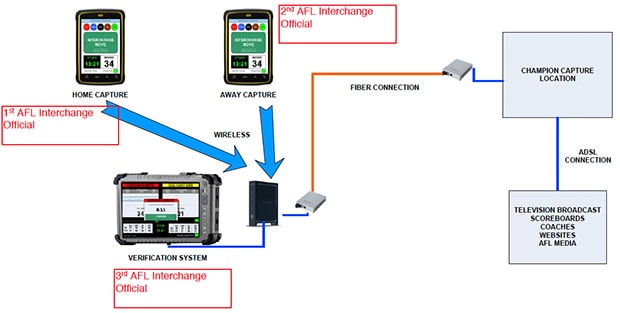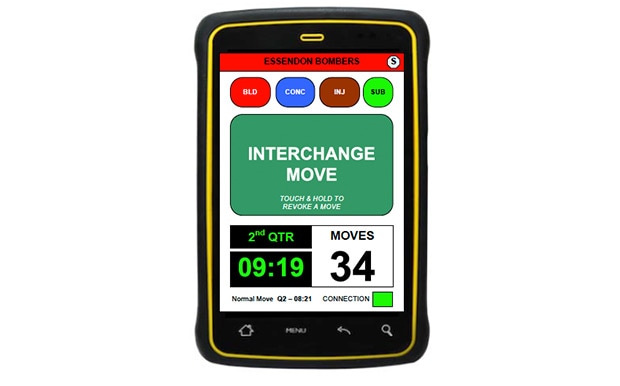A combination of people power and electronic devices will be used to monitor the new interchange cap during the NAB Challenge and home and away season.
With teams permitted to make 130 interchanges per game in the 2014 NAB Challenge, and 120 in the premiership season, the League has worked with Champion Data to develop a system to keep track of the tallies.
"We know that our fans at the venue, the coaches, the broadcasters, people watching on TV and following the game on various mobile devices want to be able to access this statistic in real time," the League's general manager of football operations, Mark Evans, told AFL.com.au.
When it comes to the people involved, two AFL-employed officials will monitor the interchanges (one assigned to each team).
They will be backed up by a third person, whose job will be to monitor any special reasons why players are leaving the field.
"Each interchange official will have a PDA (personal digital assistant, or palm-sized computer) in their hand," Evans said.
AFL interchange technical overview

"The screen will be programmed like an iPhone screen, and the officials will record when players leave the field.
"The PDAs are wirelessly connected to the officials' bench which will be connected, by cable, to the Champion Data box at every venue.
"Champion Data will then distribute the interchange stat as part of their normal statistics package that goes to the clubs, the media, the scoreboard and so on."
The AFL's data entry device for interchanges
However fans, media, players and coaches have been warned that not all players leaving the field of play will be counted towards the cap.
Interchanges made during the quarter breaks will not be counted.
Most importantly, interchanges that occur during quarters because a player has been subbed, has left the field due to the blood rule, or has been concussed are exempt.
Because a player's reason for being interchanged may not be clear at the moment that he leaves the field, all interchanges will initially be counted.
Once it is confirmed that a player has been taken off because they are bleeding, injured, concussed or have been subbed, then his team's interchange tally will be adjusted down by one.
In the case of obvious blood or when a player is stretchered from the field, the downward adjustment will happen immediately.
In the case of concussion and injury assessment or a substitute, the club in question will alert the interchange official to the situation and the change to the interchange tally will then be made.
"The count may go up and down marginally during play depending on the circumstances, and that will be something for people to get used to," Evans said.
"For a concussion, for example, the interchange official will count the player coming off and the interchange tally will go up by one.
"When the third official has confirmed that the player is being assessed for concussion – and that means he has to stay off the ground for 20 minutes – the interchange official will separately record the incident on the PDA and the tally will be adjusted down by one."
Given the interchange counting system is being used for the first time in the NAB Challenge, the AFL is urging players, coaches, media and fans to expect some teething problems.
"The 18 games are a perfect opportunity to test the technology and process and to get things right for round one of the home and away season," Evans said.
The AFL expects around 54,000 interchanges to be made, and counted, during the 2014 premiership season.


